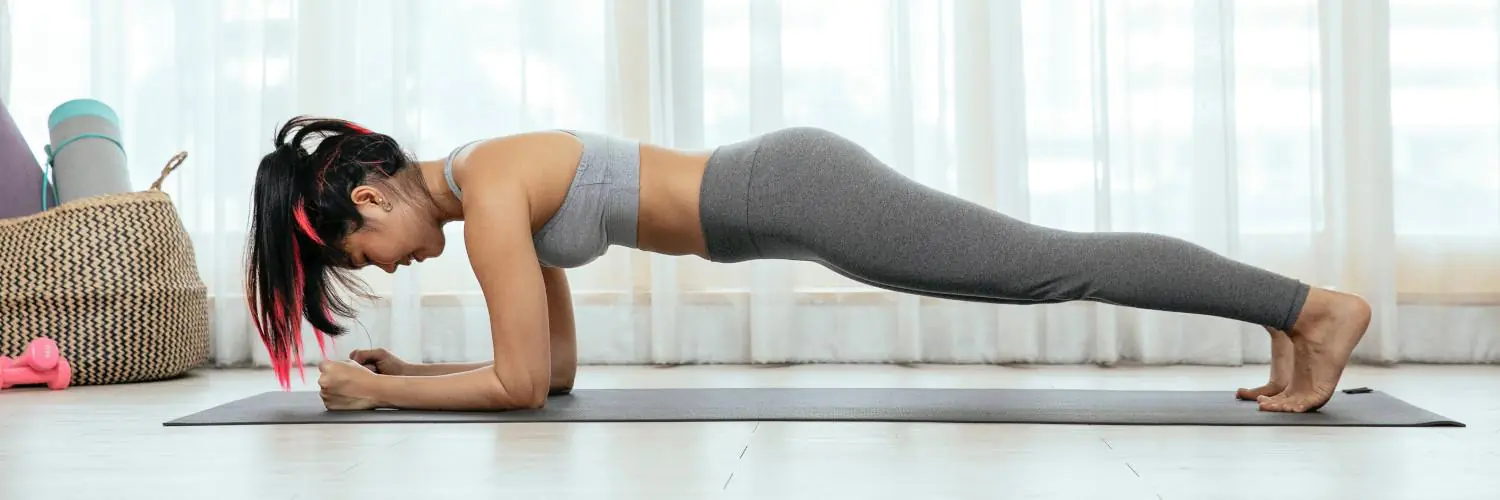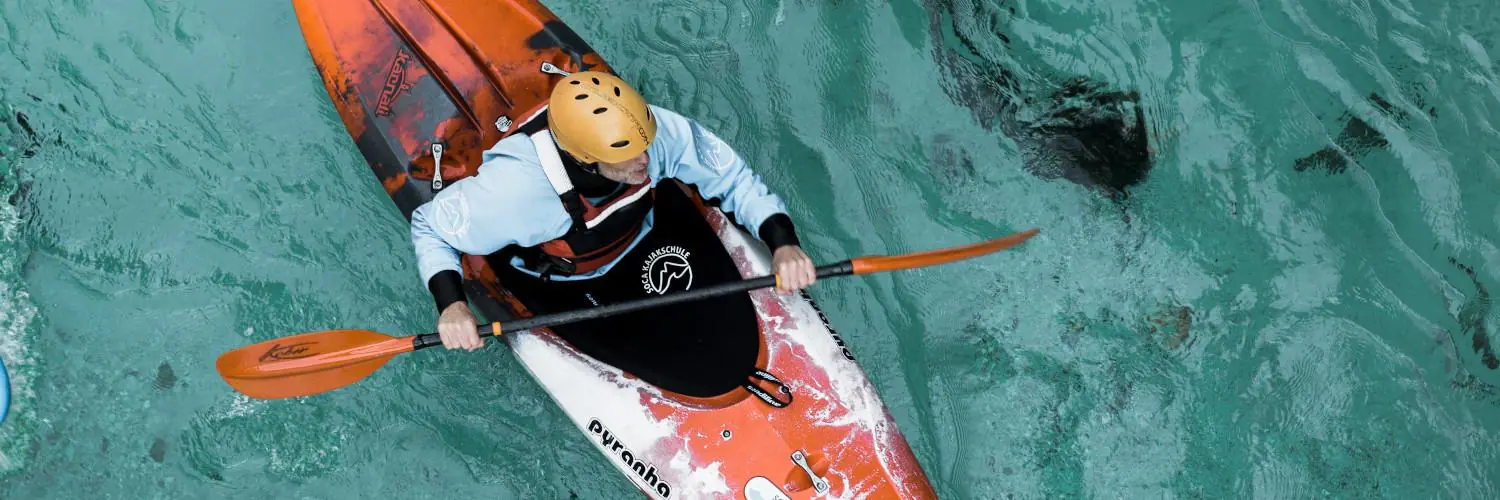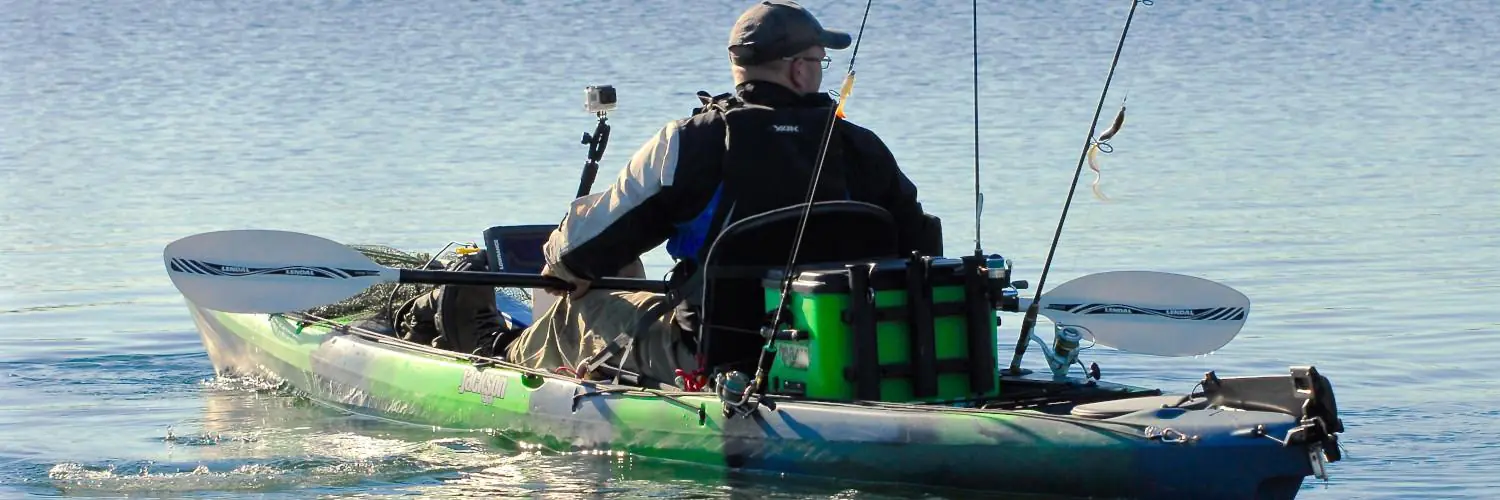The kayak row exercise is a unique movement that targets the muscles of the back, especially the lats, while also working the shoulders, arms, and core. This exercise helps improve strength and posture by mimicking the paddling motion used in kayaking, making it useful for both fitness and functional movement. It uses a cable machine to move the arms in a rotating, sweeping motion like paddling through water.
People often add the kayak row to their workout routines to build a stronger upper body and support daily activities that need pulling strength. The dynamic motion also engages the core, making it more than just a typical back exercise. Those looking to add variety or challenge their muscles in new ways may benefit from including the kayak row in their training.
Table of Contents
What Is the Kayak Row Exercise?
The kayak row is a cable machine exercise that mimics the motion of paddling a kayak. It is used to build upper body strength, especially focusing on the back and core muscles.
Kayak Row Origins and Overview
The kayak row exercise comes from the training world and was made popular by strength coach Christian Thibaudeau. The movement imitates the rotation and pulling used in real kayak rowing.
During the exercise, the person uses a cable machine. They pull the handle from side to side in a pattern that looks like paddling, alternating left and right. This unique movement sets the kayak row apart from regular rowing exercises.
The kayak row is often used as either a warm-up, to activate the back muscles, or as a “finisher” at the end of a workout. Athletes and those looking to strengthen their upper body can benefit from adding this movement to their training routine.
Muscle Groups Activated
The kayak row mainly targets the latissimus dorsi, or “lats.” It also works the middle and lower back, shoulders, biceps, forearms, and even the core muscles. This happens because of the twisting motion and need to stabilize the body during the exercise.
Muscles involved include:
- Lats (latissimus dorsi)
- Rhomboids
- Trapezius
- Biceps
- Forearms
- Core muscles
This exercise gives a more complete upper body workout than most single-plane rowing movements. The twisting and side-to-side motion ensures that smaller stabilizing muscles are also trained, not just the main pulling muscles.
Kayak Row vs. Traditional Rowing
The kayak row differs from traditional rowing exercises in both form and benefits. Traditional rows, like seated cable rows, keep the arms and handles moving in a straight line. The body usually stays upright and still.
In contrast, the kayak row involves a rotating, side-to-side rowing pattern. This twisting action puts more demand on the core and oblique muscles, helping improve rotational strength and functional stability.
Traditional rows mainly focus on the back and arms, while the kayak row includes both back muscles and core, due to the rotational movement. The kayak row’s unique motion also more closely matches real-life activities that need power from turning and twisting, such as sports and daily movement.
Benefits of the Kayak Row Exercise
The kayak row exercise targets several major muscle groups. This movement improves both upper body and core strength while helping to build better overall fitness.
Upper Body Strength and Endurance
The kayak row exercise is designed to focus on the muscles of the back, especially the latissimus dorsi. It also works the shoulders, biceps, and forearms because of the pulling motion. The exercise mimics the motion used in actual kayaking, which keeps these muscles under tension.
Regular practice increases muscle endurance, letting a person perform more repetitions without tiring as quickly. Over time, the upper body appears stronger and more defined. Using a cable machine gives even resistance, which helps improve muscle growth for the back and arms.
This exercise is well-suited for anyone looking to increase their pulling power and general upper body strength, making it easier to perform other lifts and daily activities that involve carrying, pulling, or lifting.
Core Stability and Balance
In addition to the upper body, the kayak row engages the abdominals, obliques, and lower back. The torso must rotate and stay stable through each paddle-like movement. This action requires the core muscles to work hard to maintain control and balance.
Stronger core muscles help with posture and prevent lower back injuries. They also improve balance, making it easier to stay steady during other exercises or sports. People who do the kayak row regularly often notice better control over their movements and a steadier base during workouts.
This focus on stability develops a foundation for more advanced fitness goals. Even simple activities, like walking or climbing stairs, can become safer and easier with increased core strength.
Functional Fitness and Athletic Performance
The kayak row is known as a functional exercise because it copies natural movements that transfer into everyday life and sports. Mimicking the act of rowing or paddling trains the body for activities that require coordinated upper and lower body strength.
Many athletes use the kayak row to boost their athletic performance, especially in rowing, swimming, and even racquet sports. Improved muscle coordination and strength help with quick changes of direction, gripping, and pulling actions.
Functional training with exercises like the kayak row also reduces the risk of injury, since the muscles and joints learn to move together in safe, controlled patterns. This makes it useful for anyone wanting to move more efficiently in daily activities and athletic settings.
Cardiovascular and Aerobic Advantages
Although mainly a strength exercise, the kayak row can also offer cardiovascular benefits. When performed at higher intensities or included in circuit training, it raises the heart rate and challenges the lungs.
This makes the kayak row useful as an aerobic exercise, building endurance and promoting cardiovascular health. The body’s ability to use oxygen improves, which supports longer workouts without fatigue.
Including the kayak row in a routine helps develop muscular endurance and aerobic fitness at the same time. This means individuals can work out harder and recover faster, supporting a wide range of fitness goals.
Kayak Row Technique and Proper Form
Using the correct kayak row technique is important to work the right muscles and avoid injury. Paying attention to form, movement control, and posture helps get the most benefit from this exercise.
Kayak Row Instructions
The kayak row can be performed with a cable machine or resistance band. To begin, set the handle at about chest height. Stand or sit with feet shoulder-width apart and knees slightly bent, holding the handle with both hands.
Pull the handle across your body in a smooth, controlled motion, as if mimicking a kayaking stroke. Pause briefly, then return to the start position and alternate sides. Aim for slow, steady repetitions, keeping the movements controlled.
Choose a weight that allows for 10-15 reps with good form. Perform 2-3 sets, resting 60-90 seconds between sets. Avoid fast, jerky motions—they reduce effectiveness and increase risk.
Proper Posture and Neutral Spine
Maintaining proper posture is key for a safe and effective kayak row. The chest should stay up, shoulders relaxed, and eyes looking forward during each rep.
The spine should remain in a neutral position. Avoid rounding or arching the back. Tighten the core muscles slightly to protect the lower back throughout the movement.
Feet should stay flat on the floor, with knees soft but not locked. This stance gives balance and stability. Keeping good posture supports engagement of the core and lower body during the rowing motion.
Common Mistakes to Avoid
Several common mistakes can limit the benefits or cause harm during the kayak row:
- Rounding the back: This puts stress on the spine. Focus on a straight, neutral line from head to tailbone.
- Using momentum: Swinging or jerking the handle decreases muscle activation. Slow, controlled pulls are best.
- Over-rotating the torso: Extra twisting can strain the lower back. Rotate only slightly through the upper body.
- Letting elbows flare out: Keep elbows close to the body for better form and muscle engagement.
Double-checking technique in a mirror or asking for feedback can help correct these issues. Controlled movement and attention to posture are essential for safe, effective results.
Equipment and Variations for the Kayak Row
The kayak row exercise can use different equipment, depending on what is available and what muscles someone wants to focus on. Each variation changes how the exercise works and can help target specific areas in the back, shoulders, and arms.
Cable Machine Setup
A cable machine is commonly used for the kayak row because it allows for a smooth, controlled movement that mimics real kayaking.
To set up, attach a straight handle or rope to a low cable pulley. Adjust the weight to match your strength level. Sit or stand a short distance away, hold the handle with both hands, and keep your arms straight. As you row, move the handle in a slight arc, pulling with one arm at a time in a paddling motion.
Key points for the cable machine:
- Equipment: Low cable pulley, straight bar or rope handle
- Setup: Sit or stand, feet shoulder-width apart
- Movement: Alternate sides, pulling the handle in a smooth arc
The cable machine version targets the lats, middle back, and forearms. Keeping proper form is important to get the most benefit and avoid injury.
Resistance Band and Dumbbell Variations
Resistance bands and dumbbells offer easy options for those without access to a cable machine. Both can be used at home or in a gym.
To use a resistance band, anchor one end at floor level. Hold the other end in both hands and perform the same paddling motion as the cable version. Bands work well for lighter resistance and help improve control.
For dumbbells, use one dumbbell at a time. Sit on a bench and hold the weight in both hands. Mimic the kayak motion, leaning slightly and rotating the torso as you row. This variation requires more core control and stabilizes the movement.
Table: Equipment and Setups
| Equipment | Anchor Point | Setup | Benefit |
|---|---|---|---|
| Resistance Band | Door or low post | Standing/Sitting | Lightweight and portable |
| Dumbbell | None needed | Seated | Core and upper back engagement |
Both methods let users vary resistance and can help target smaller stabilizer muscles.
Thibaudeau Kayak Row and Cable Thibaudeau Kayak Row
The Thibaudeau Kayak Row was made popular by Christian Thibaudeau. It is designed to hit the lats and other upper back muscles by copying the exact motion of paddling.
For the traditional Thibaudeau Kayak Row, use a cable pulley. Grasp the handle with both hands, pull in a sweeping arc while twisting the body slightly. This movement combines rotation and rowing, activating the lats, middle back, and even the triceps.
The Cable Thibaudeau Kayak Row keeps the same pattern but is usually performed seated for extra stability. This version isolates the upper body even more, reducing help from the legs and hips.
Key features:
- Targets: Lats, traps, rear delts, and forearms
- Force type: Pull
- Created by: Christian Thibaudeau
- Focuses on: Rotation, torso twist, and strong finish position
These variations are effective for building strength and muscle balance across the whole upper back.
Muscles Worked During Kayak Row Exercise
The kayak row exercise targets several major muscle groups at once, making it a full upper body and core movement. Its unique rowing motion leads to broad muscle activation and helps improve strength and muscle tone in several areas.
Primary Muscles: Back, Lats, and Shoulders
The main muscles worked during the kayak row are in the back, especially the latissimus dorsi or lats. These muscles help pull the arms back and give the movement its power.
The exercise also involves the middle back muscles, like the rhomboids and trapezius, which help bring the shoulder blades together and maintain good posture.
Shoulders play a key role, too. The posterior deltoids work to control the rowing motion, making sure the shoulders stay strong and stable during each rep.
This combined back and shoulder activation is what makes the kayak row a powerful exercise for building upper body strength.
Table: Primary Muscles Activated
| Muscle | Role in Exercise |
|---|---|
| Latissimus Dorsi | Main pulling muscle |
| Rhomboids | Retracts shoulder blades |
| Trapezius | Stabilizes upper back |
| Deltoids (rear) | Controls shoulder movement |
Core and Abdominal Activation
The kayak row is not just an upper body exercise—it also works the core. As the cable is pulled in a twisting motion, the abdominal muscles and core muscles engage to keep the body stable and protect the lower back.
Muscles like the rectus abdominis, obliques, and transverse abdominis contract to resist rotation and help maintain balance.
This core activation improves posture and helps transfer force efficiently from the lower to the upper body.
People often feel their abs working while rowing, which shows the important role the core plays in the exercise.
Key Core Muscles Engaged:
- Rectus abdominis
- External and internal obliques
- Transverse abdominis
Secondary Muscles: Arms, Traps, and Forearms
While the back and core do most of the work, the arms and forearms also get involved. The biceps flex the elbow during the row, while the triceps play a small role in arm stabilization.
The forearm muscles grip the cable or handle tightly, improving grip strength over time. Trapezius muscles in the upper back help to stabilize the shoulders, especially as the arms move through the full range of motion.
These secondary muscles help support the main movers and make the exercise more complete.
List of Important Secondary Muscles:
- Biceps (elbow flexion)
- Triceps (arm stabilization)
- Forearms (grip strength)
- Upper traps (shoulder stability)
Incorporating Kayak Row Into a Fitness Routine
Kayak rows help strengthen the back, shoulders, and arms while improving stability and control. They can fit into many workout routines and can be adjusted for different fitness levels.
Sample Workout Routine
A basic routine with kayak rows focuses on both strength and endurance. Here is one way to add kayak rows to a balanced workout:
- Warm-Up: 5–10 minutes of light cardio (walking or cycling)
- Kayak Row: 3 sets of 12–15 reps per side, using a cable machine or resistance band
- Push or Pull Movement: 3 sets of push-ups or cable rows
- Core Training: 3 sets of planks
- Cool Down: Stretching for 5–10 minutes
It works well to place kayak rows early in the session when energy is high. They can be paired with core and upper body exercises for balanced development.
Adjusting for Beginners and Fitness Levels
Kayak rows can be adapted for any fitness level. Beginners should start with a light weight or low resistance band to learn the movement. Focus should be placed on slow, controlled movements rather than speed.
Here’s a guide for different fitness levels:
| Level | Resistance | Sets x Reps | Notes |
|---|---|---|---|
| Beginner | Light | 2 x 10 per side | Focus on form, rest as needed |
| Intermediate | Moderate | 3 x 12–15 per side | Add a slight pause at full contraction |
| Advanced | Heavier/Varied | 4 x 15–20 per side | Increase resistance or add tempo adjustments |
Progress only when the form is solid.
Kayak Row Tips and Progressions
Form is key in the kayak row. Stand or sit tall, keep the core braced, and avoid twisting the body. Use smooth, even movements with both arms, imitating the paddle action.
For progressions:
- Add resistance by increasing cable weight or using a stiffer band.
- Increase time under tension by slowing the rowing motion.
- Try single-arm kayak rows for extra core challenge.
Common mistakes include using too much weight, rushing through reps, or over-twisting the torso. Focus on quality over quantity.
Alternative and Complementary Exercises
Other exercises can build similar strength and support good rowing form. These substitutes and additions help create a well-rounded upper body routine.
Alternative options include:
- Bent-over dumbbell rows
- Seated cable rows
- Face pulls
- Lat pulldowns
For complementary core and cardio improvement:
- Russian twists
- Mountain climbers
- Short cardio intervals (rowing machine, bike, or jump rope)
Changing these exercises keeps the routine interesting and improves results over time. Mixing with cardio workouts also helps boost endurance.








